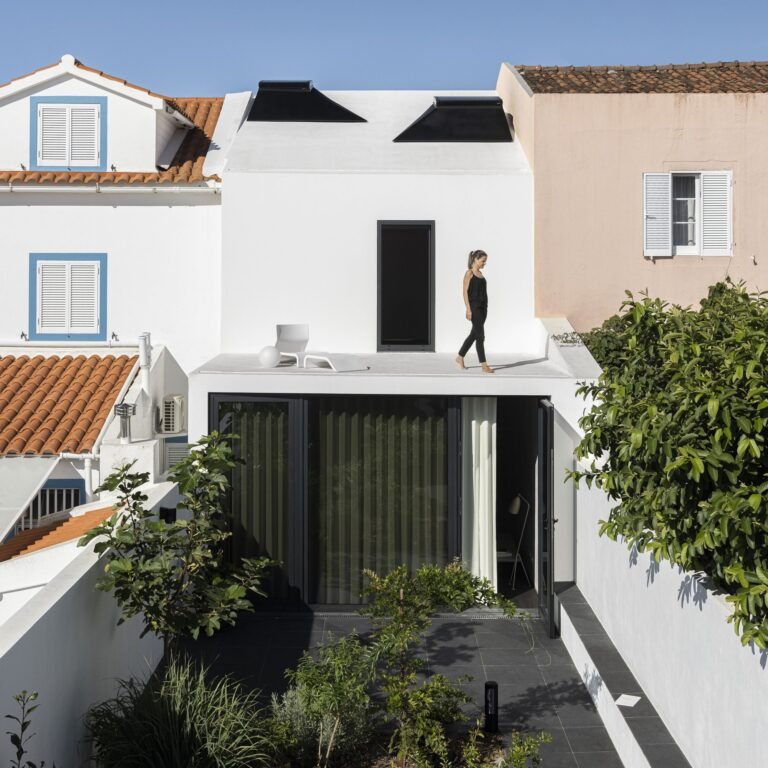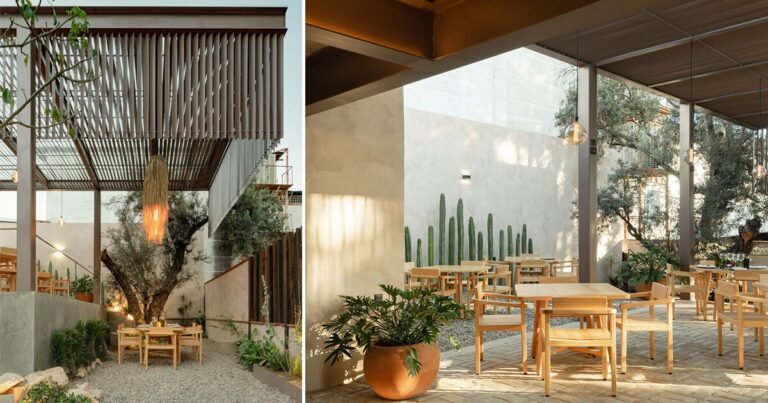Carlo Ratti Associati insert a mock tokamak reactor into a historic gasholder at Maker Faire Rome
Carlo Ratti Associati (CRA) and Milan-based architect Italo Rota have joined forces with Rome-headquartered global energy behemoth Eni to explore the carbon-free potential of magnetic confinement fusion energy at a pop-up exhibition at this year’s just-concluded Maker Fair Rome. The spherical pavilion is realized as an ersatz tokamak fusion reactor within placed within Gazometro Ostiense, a landmark gasholder site in Rome. First conceptualized in the Soviet Union in the 1950s, tokamak fusion reactors are experimental magnetic confinement devices developed to produce controlled thermonuclear fusion.
Described by Eni as a “safe, sustainable and inexhaustible source of energy” that serves as a “breakthrough in the path to decarbonization,” magnetic confinement fusion has been at the core of multiple recent collaborations between the company and academic institutions including the Plasma Science and Fusion Center (PSFC) at the Massachusetts Institute of Technology, where CRA founder Carlo Ratti is also director of the MIT Senseable City Lab. Eni has also collaborated with Commonwealth Fusion Systems, which was established in 2018 as a spin-off of the PSCFC. The mock tokamak reactor at Maker Fair Rome was also the latest in a string of collaborations between CRA and Eni that showcase emerging clean energy technologies.
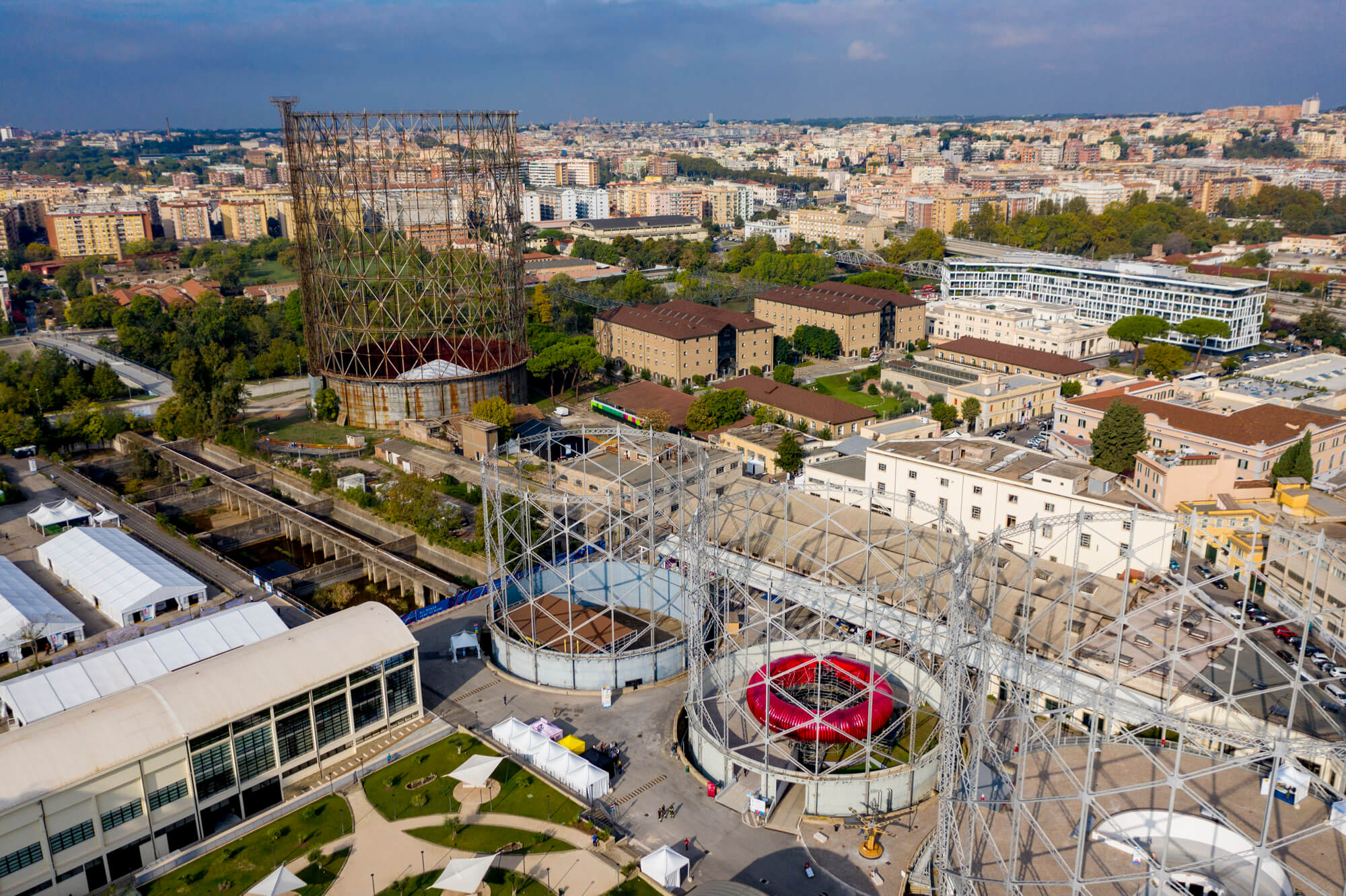
A CRA press release announcing the special exhibition at Gazometro Ostiense, an iconic industrial relic completed in 1937, details the nuts and bolts of how the process works: “During the process of magnetic confinement, fusion of two hydrogen nuclei releases an enormous amount of energy, similarly to how it happens inside the sun and other stars. The most substantial advantage of this technology is that it does not emit greenhouse gases or highly polluting or highly radioactive substances. Furthermore, it is safe and virtually inexhaustible.”
“Magnetic confinement fusion is a clean technology that has the potential to be one of tomorrow’s key decarbonization solutions,” added Ratti. “With the project, we wanted to start an open-design process to imagine how fusion power plants will be integrated in sub-urban areas – prompting makers and architects alike to join a discussion on our future energy landscape.”
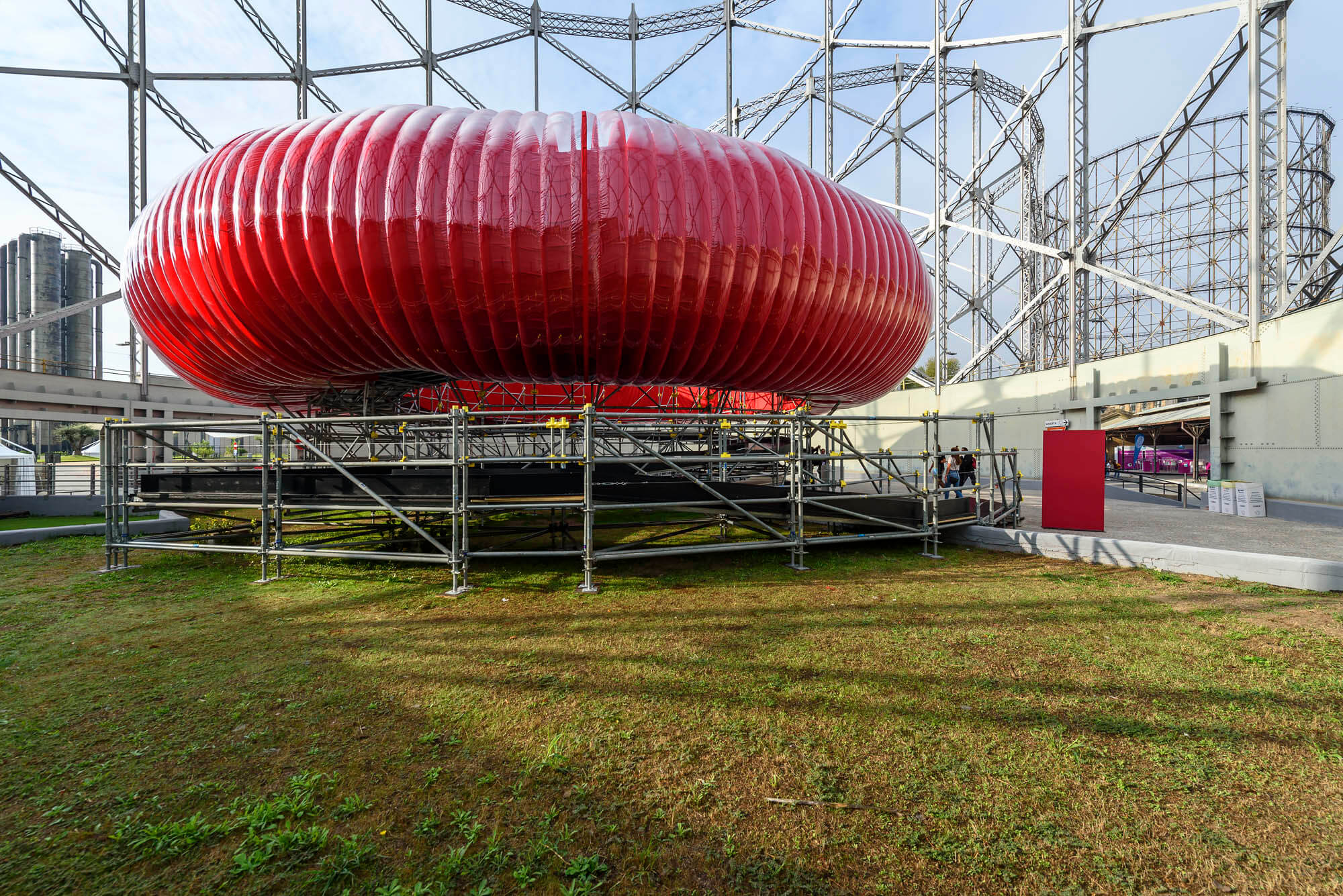
Once holding giant balloons that contained Rome’s gas supply, the four cylindrical, metal-framed structures that comprise the Gazometro Ostiense were decommissioned in the 1960s when the city switched over to methane. Today, the structures are enduring symbols of the Roman skyline and serve as a striking juxtaposition to the city’s wealth of ancient monuments; the tallest of the structures, a colossal cylinder reaching nearly 300 feet that ranks as the tallest gasometer in Europe, is often referred to as the city’s Industrial Colosseum.
During Maker Faire Rome, which hosted its 10th edition from October 7–9 at the Gazometro Ostiense complex, attendees were allowed to access one of the three smaller gasholders, entering the faux tokamak via a winding ramp. Once inside the donut-shaped pavilion’s red-lit circulator corridor, visitors could learn more about the technology and its “ongoing scientific investigations” through a series of multimedia content.
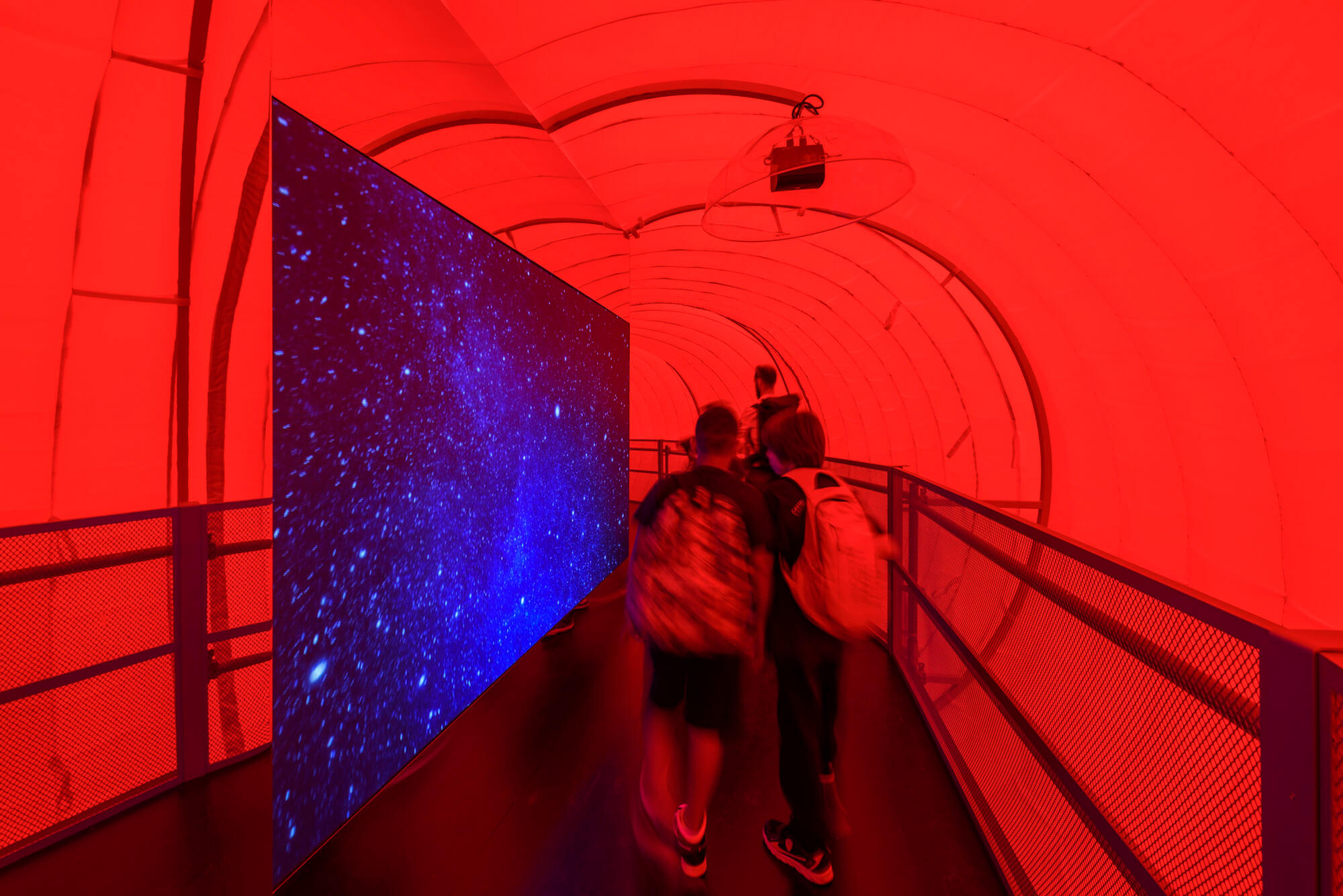
“We have the chance to explore new forms of storytelling about energy,” said Rota, who served as co-designer of the installation. “We believe that design is a powerful tool to turn a narration into an experience, allowing visitors to sense the energy while being surrounded by a unique atmosphere.”
Carlo Ratti will deliver the keynote at AN’s upcoming Tech+ conference, a hybrid live-virtual event in New York City on October 21. Click here to register and learn more.

